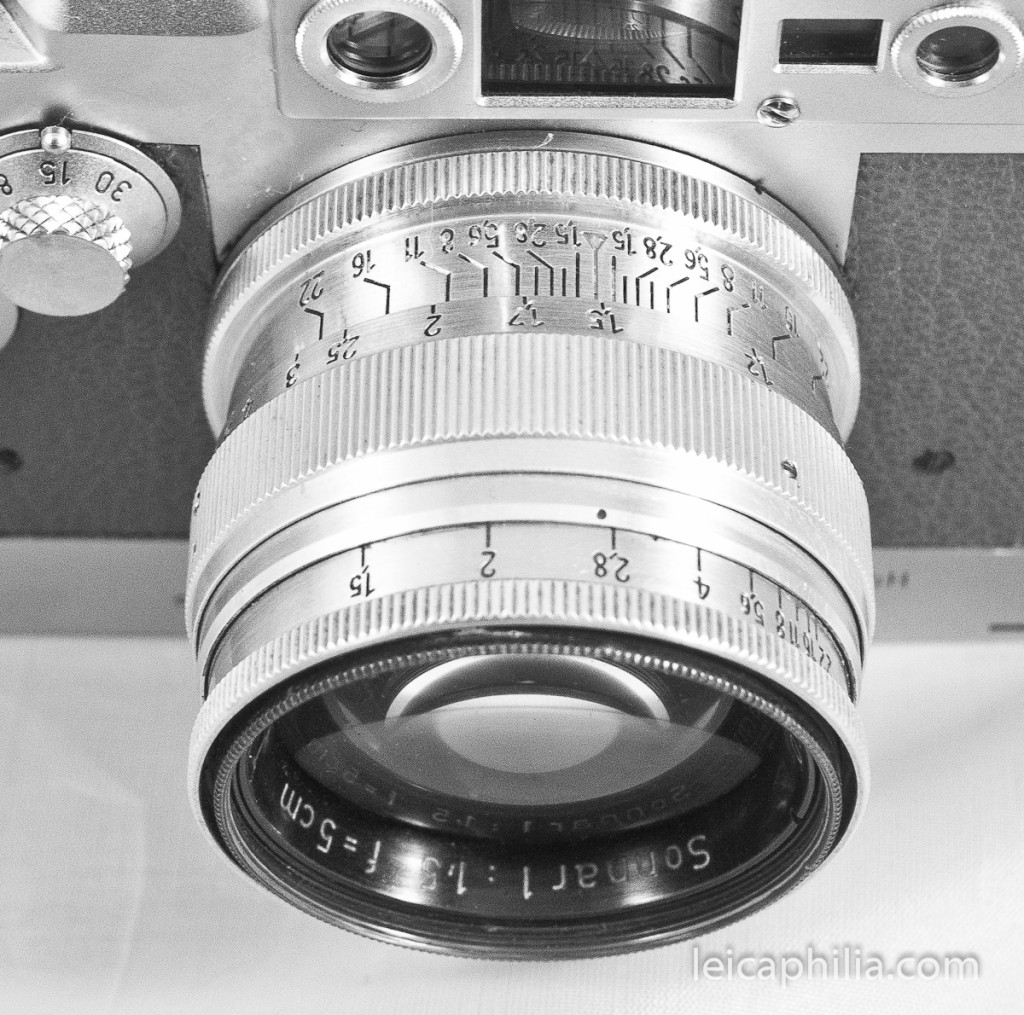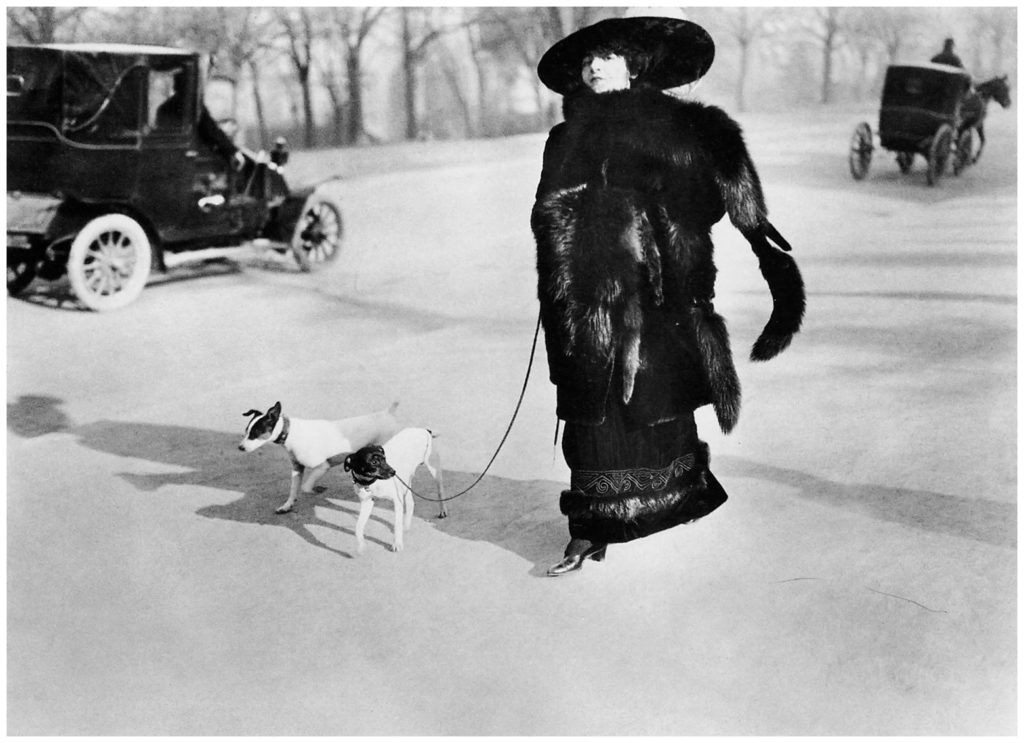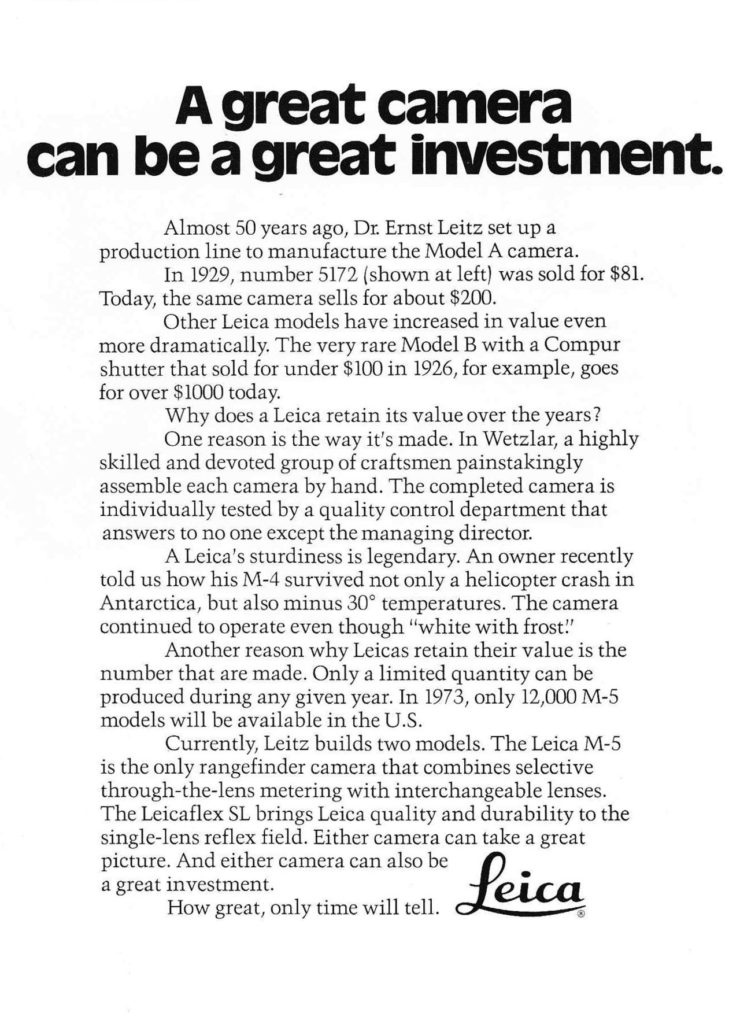 A Like New Black Nikon F: One More Beautiful Thing I Don’t “Need”
A Like New Black Nikon F: One More Beautiful Thing I Don’t “Need”
If you’ve been reading this blog with any regularity, you’ll know that i’ve been periodically selling off equipment in a professed attempt to de-clutter my photographic life. [More to come shortly.] I woke up one day and realized my collection of ‘must have’ cameras and lenses had grown ridiculously large. I’m not necessarily against owning a collection of cameras, it’s just that, when it comes to photography, I’m not a ‘collector’ but rather fancy myself a user. You’d think that having a lot of cameras and lenses would be beneficial for someone who intended to use them for specific purposes, but in reality it doesn’t work that way. What happens is that the multitude of choices you’ve given yourself make choosing more difficult. Faced with the decision of what to pick up and use, I find myself defaulting, usually grabbing the same camera and the same lens as always, saving myself the trouble of having to deal with the cognitive dissonance that comes along with justifying whatever choice I would have otherwise made. And then there’s the emotional component, you know, the fact that I got such and such camera at such and such time and such and such place and did such and such thing with it back in the day, all part of the myriad of irrational factors we consider when we make value judgments about the things we own. Such are the anxieties that come with affluence.
You’ll also know that I tend to lapse into abstract discussions about things as I’m doing here, a habit I’ve possessed since young (my favorite book as a teenager was Nausea by JP Sartre (!)), and have an annoying habit of citing obscure thinkers to make a point. From a psychological perspective, it’s probably overcompensation, something I learned early on as a non-conformist teen with a middle finger up to any authority; when faced with the specious claims of those who claim authority to speak, you can often shut them up by one-upping them with competing claims based upon arcane sources, given that those in positions of authority dread admitting you might know arguments and authorities they don’t. Using this method, many years ago already I had come to the realization that most of those who claim authority over a subject are usually full of shit, their claim to it easily deflated with some critical argument.
One thing I have concluded, with certainty, is that cameras, however beautiful or iconic they might be, are still just things produced and meant to be used. You can put them on a shelf and admire them, but the satisfaction that brings is fleeting because, at bottom, they’re tools to be used, and where they find their meaning is in their use.
***************
 A Carl Zeiss Jena 5cm 1.5 Sonnar, disassembled, cleaned and calibrated by Mr. Sweeney himself. Is it a rare, super-cool lens to use with your Leica? Yes. Do I “need” it? No.
A Carl Zeiss Jena 5cm 1.5 Sonnar, disassembled, cleaned and calibrated by Mr. Sweeney himself. Is it a rare, super-cool lens to use with your Leica? Yes. Do I “need” it? No.
But I digress. The reason for this post is to sell some stuff. In this case, really good stuff, the stuff I’ve been holding off selling in the hope I’d find a reason to keep it, because, frankly, I’m getting down to the equipment I have a real emotional attachment to insofar as one can be emotionally attached to things. It doesn’t help that the IRS is sending me letters suggesting I owe them money and hinting at extraordinary measures to collect it if it’s not immediately forthcoming. So much for emotional attachments. The IRS notwithstanding, I’d recently reached the conclusion that my photographic life would benefit from some further downsizing. Specifically, I’ve concluded I “need” the following: 1 film rangefinder camera with 21/35/50 lenses. And 1 digital camera with a lens. That’s it. The rest, nice as it might be to have, is redundant and certainly not required.
What I actually have at this point is this (even though I’ve been gradually selling off things now for the last year or two):
- -A mint black Chrome Leica M4 ;
- 2 Leica M5’s, one black, one chrome, the chrome version needing a new beam-splitter but otherwise quite nice;
- a Leica IIIg, in need of a general overhaul;
- a Leica IIIf, also in need of maintenance;
- A chrome Leicaflex SL body;
- A standard prism user black paint Nikon F with a stuck shutter;
- A standard prism black paint Nikon F with perfect 50mm f2 Nikkor-H, the nicest Nikon F I’ve ever seen and definitely a collector;
- a Nikon S2 in need of a CLA;
- A Bessa R2S with Voigtlander 25mm, 35mm and 50mm lenses and a few Nikkor RF lenses as well;
- A Nikon F5 with a slew of manual and AF Nikkor lenses;
- A Contax G2 with 45mm Planar and data back who ISO button is stuck that I’ve been using to take one picture of myself in the mirror everyday for about 6 years now;
- A very nice, seldom used Leica M8;
- A Ricoh GXR with M module;
- A Ricoh GXR with Ricoh 28mm, 50mm and zoom modules
Frankly, as my wife periodically notes to me, that’s ridiculous.
*************
 Pretty Much “Perfect” Black Chrome Leica M4 # 1381902 (1974). Selling this will hurt.
Pretty Much “Perfect” Black Chrome Leica M4 # 1381902 (1974). Selling this will hurt.
In deciding what to sell and what to keep (for now), I’ve taken into account what I’d recoup from selling a given item, as an example, the Nikon F5. It may be the most sophisticated, bulletproof film camera ever made: incredibly robust, full of all the features we now expect of DSLRs, it sells for a fraction of its true photographic worth. A quick trip to Ebay sees them selling for $200 and up. That’s nuts. Keep batteries in it and that camera will be working long after I’m dead, plus you get to use the full range of Nikkor lenses, manual focus lenses dating back to the 50’s all the way up to full frame AF Nikkors being produced today. All of that is worth more to me than $250 in my pocket, irrespective of how few times I use the camera. The F5 I keep. Likewise, the cameras that need service. Sell em now for next to nothing or have them serviced and sell them for what they’re worth. So, the Chrome M5, IIIg, IIIf, user Nikon F, the Nikon S2 and the Contax G2 all stay. Next step is to get them serviced, sometime down the road. Which leaves me with a working F5 and tons of optics for it, a Bessa R2S with 25/35/50/85/135, a black M5, a mint black M4, a mint black Nikon F with mint period correct 50mm Nikkor-H that’s apparently been on the camera since new (since it seems as unused as the body and plain prism), a little used M8 and two Ricoh GXRs.
The M5 I keep, as I’ve had it 40 years and is the one camera I’ve always said I’d never sell although it would make sense to sell the M5 and keep the Bessa with its Voigtlander Nikkor mount lenses. Given this, I’ll keep both. As for the digital bodies, I’ll keep one GXR with the 28, 50 and zoom modules. If I can’t meet my photographic needs with
- a Nikon F5 and about 20 Nikkors of various size, shape and focal lengths
- An M5 with a 21/35/50
- A Bessa R2S with a 25/35/50/85/125
- A Ricoh GXR with 28 and 50 modules
then clearly my “needs” are driven by something other than what’s necessary.
*************

Selling this one too. Got the boxes and all the ancillary stuff. Just don’t need it.
How does someone who’s always considered himself above the petit-bourgeois consumerist mindset end up with so much pretty stuff? Good question. It sneaks up on you; while you’re busy chuckling at the lost souls on the photo forums commiserating with other lost souls about which new Fuji body they need to replace last year’s Fuji kit, which 6 months ago replaced the 2015 Fuji, you yourself are engaged in the functional equivalent, buying another camera just because, telling yourself your motives are somehow better, less suspect than the neurotic consumerists who populate the usual sites. You’re not. You’re just another American who’s bought into the idea that happiness comes from stuff, especially really nice stuff like used Leicas.
[ So…., a bunch of things – the M4, the M8, the F, the CZJ Sonnar etc – will be going up for sale on the “For Sale” page of the site. They should be up in a day or two.]
Views: 1653































 HCB’s LTM Summicron
HCB’s LTM Summicron





















